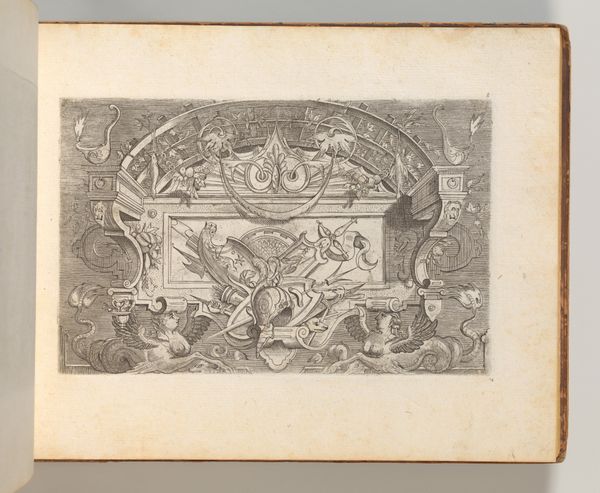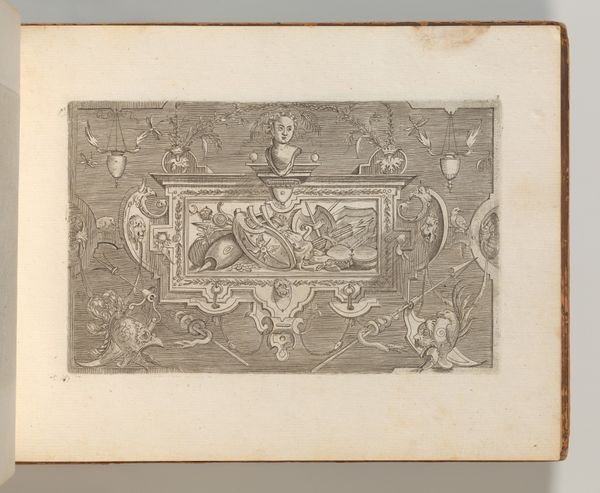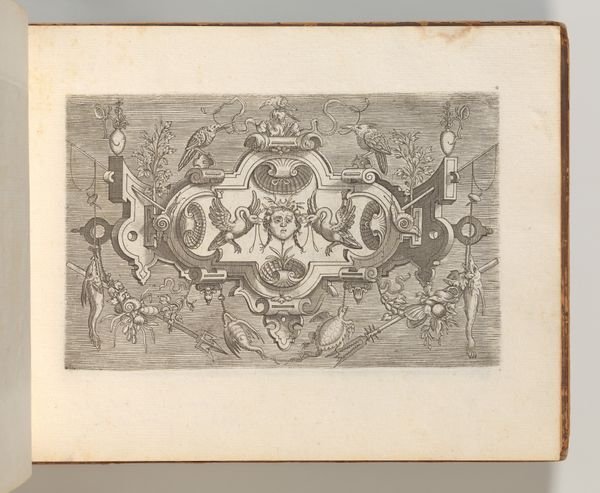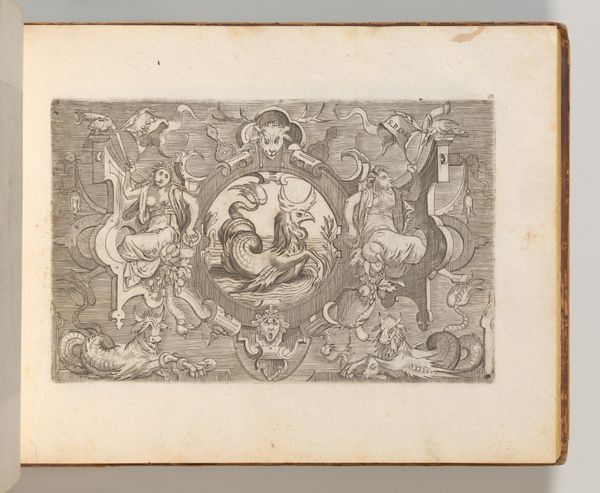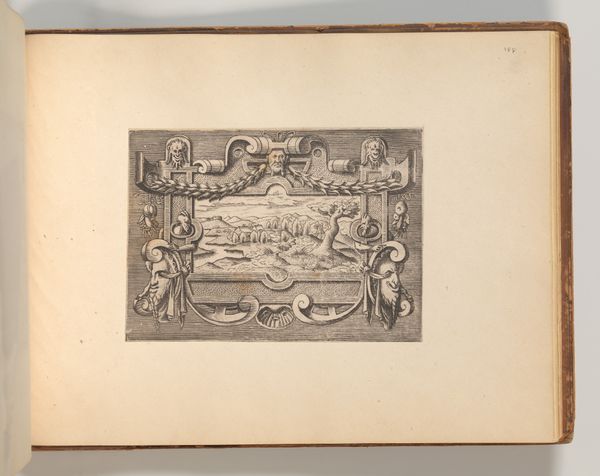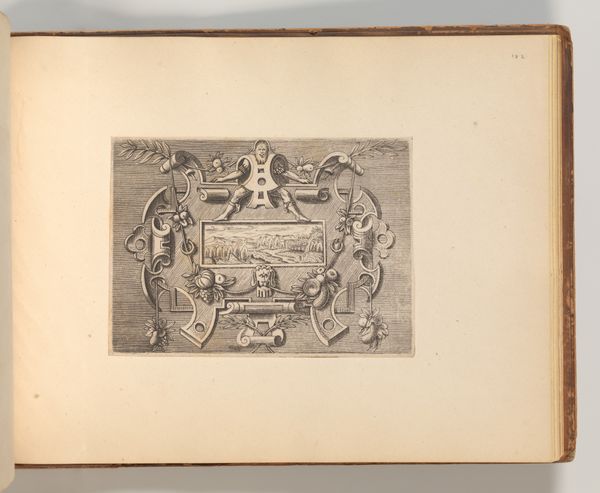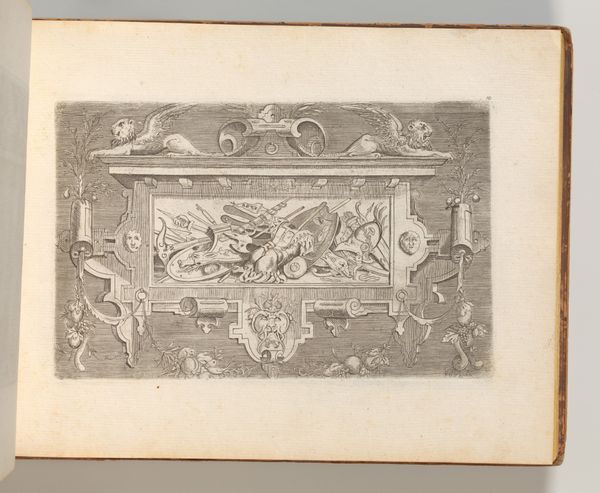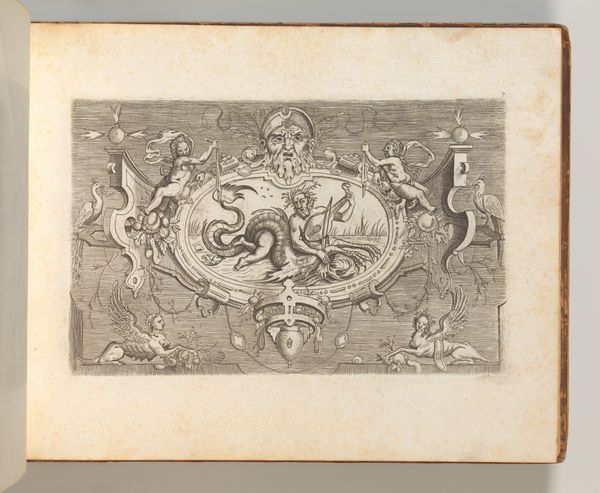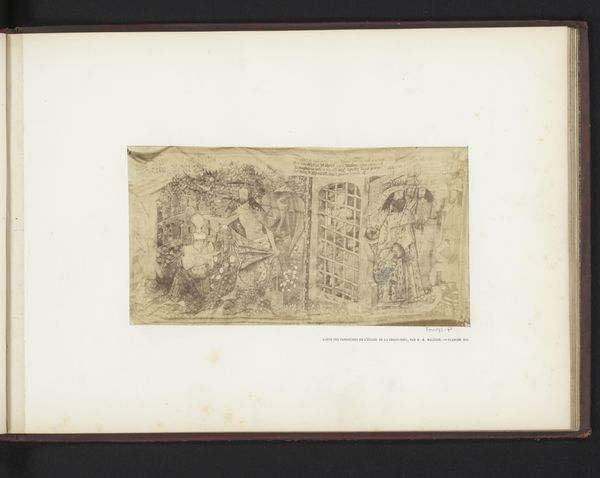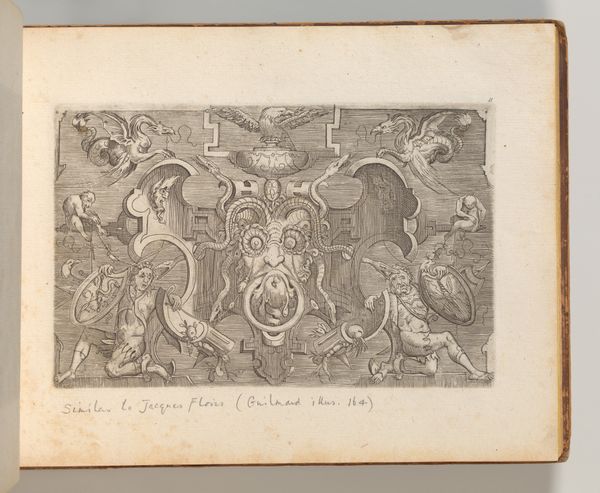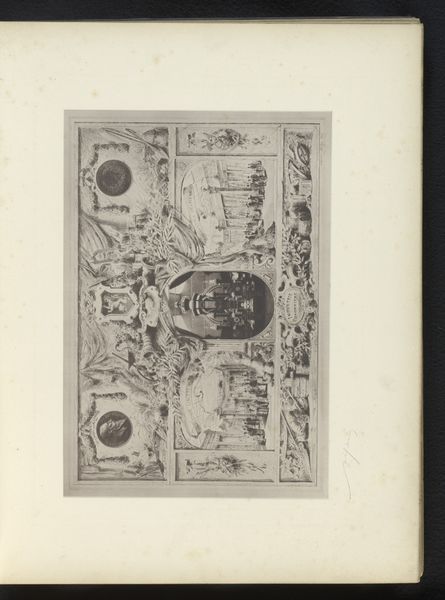
Targhe ed altri ornati di varie e capricciose invenzioni (Cartouches and other ornaments of various and capricious invention, page 5) 1773
0:00
0:00
Dimensions: Sheet: 7 7/8 × 10 5/16 in. (20 × 26.2 cm) Plate: 5 1/8 × 11 13/16 in. (13 × 30 cm) Overall: 8 1/4 × 10 5/8 in. (21 × 27 cm)
Copyright: Public Domain
This is a page from a book of ornament, etched by Jacob Floris in the 16th century. It’s made using a printmaking process called etching. A metal plate is coated with wax, the design scratched through to expose the metal, and then acid is applied, biting away at the lines. Consider the material reality of this image. The crisp lines and intricate details are only possible because of the inherent properties of metal and acid, and the skill of the etcher in controlling their interaction. Look closely, and you'll see the texture created by the etching process, a subtle but vital part of the overall aesthetic. The book from which this comes would have been a source of design ideas for other artisans - metalworkers, carpenters, stonemasons, and so on. It gives us insight into the world of early modern craft and design, where the dissemination of visual ideas was crucial for maintaining consistent styles across different media. By looking at this page, we can see how the making process shapes not just the image, but also the wider culture of craft and design in which it was created.
Comments
No comments
Be the first to comment and join the conversation on the ultimate creative platform.
